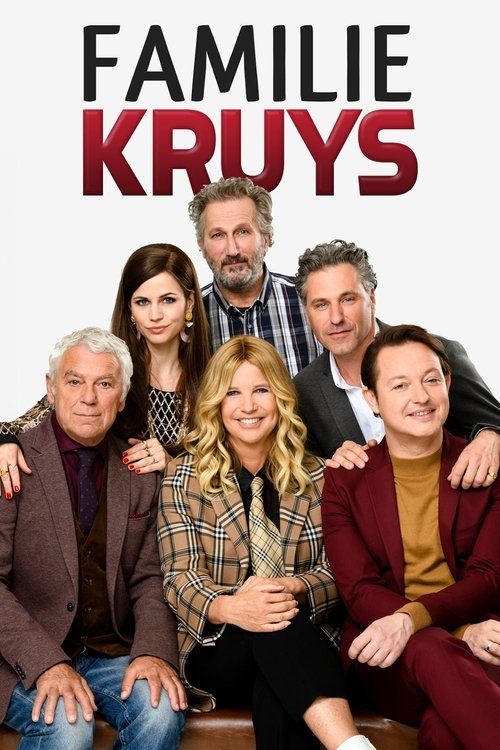
Ask Your Own Question
What is the plot?
"Familie Kruys" begins with the Kruys family, a wealthy and somewhat dysfunctional family living in the Netherlands. The story centers around the family dynamics, particularly focusing on the matriarch, Kiki Kruys, who is a strong-willed and ambitious woman. She is determined to maintain her family's status and control over their family business, which is a successful hotel chain.
The series opens with Kiki preparing for a family gathering, showcasing her meticulous nature and desire for everything to be perfect. Her husband, the laid-back and somewhat oblivious man, is supportive but often finds himself overshadowed by Kiki's strong personality. Their children, including the rebellious daughter and the ambitious son, each have their own struggles and aspirations that often clash with Kiki's expectations.
As the family comes together for the gathering, tensions rise. Kiki's daughter expresses her desire to pursue a career in the arts, which Kiki dismisses as impractical. This leads to a heated argument, revealing the underlying issues of control and expectation within the family. The son, meanwhile, is trying to prove himself in the family business but feels the pressure of living up to his mother's high standards.
In a pivotal moment, Kiki discovers that her husband has been keeping secrets from her, including financial troubles that could jeopardize their business. This revelation sends Kiki into a spiral of anger and betrayal, leading her to confront her husband. Their confrontation is intense, filled with accusations and emotional turmoil, as Kiki grapples with the fear of losing everything she has worked for.
As the series progresses, the family faces various challenges, including external threats to their business from competitors and internal conflicts that test their loyalty to one another. Kiki's determination to protect her family's legacy drives her to make increasingly drastic decisions, including manipulating situations to her advantage, which creates further rifts among family members.
The children begin to take more initiative in their lives, with the daughter pursuing her artistic dreams despite Kiki's disapproval, and the son trying to assert his authority in the family business. This leads to a power struggle between Kiki and her children, as they seek to carve out their own identities while still being tied to the family legacy.
In a climactic moment, a major crisis hits the family business, forcing Kiki to reevaluate her approach. She must decide whether to continue her controlling ways or to trust her children to help navigate the challenges. This decision becomes a turning point for Kiki, as she begins to recognize the importance of collaboration and support within the family.
The series culminates in a dramatic family meeting where Kiki finally acknowledges her mistakes and the need for change. The family comes together to confront their issues, leading to a heartfelt resolution where they agree to work as a team moving forward. This moment signifies a shift in their dynamics, as they embrace their individual strengths while also supporting one another.
The final scenes depict the Kruys family united, ready to face the future together, having learned to balance their ambitions with their familial bonds. The series ends on a hopeful note, suggesting that while challenges will always arise, the strength of their family connection will help them overcome any obstacles.
What is the ending?
In the ending of "Familie Kruys," the family faces various personal challenges and reconciliations. The series concludes with a sense of unity and understanding among the family members, as they come to terms with their individual struggles and the importance of family bonds.
As the final episode unfolds, we see the Kruys family gathered in their home, a space filled with memories and emotional weight. The atmosphere is tense yet hopeful, as each member reflects on their journey throughout the series.
First, we focus on the matriarch, who has been a central figure in the family's dynamics. She stands in the kitchen, preparing a meal, a symbol of her nurturing role. Her hands move deftly, but her mind is elsewhere, contemplating the challenges she has faced with her children. She feels a mix of pride and concern, knowing that her children are growing up and making their own choices, yet she worries about their future.
Next, we shift to the eldest son, who has been struggling with his identity and career choices. He enters the living room, where his siblings are gathered. There is a palpable tension as he shares his decision to pursue a path that diverges from the family expectations. His voice trembles with uncertainty, but there is also a newfound determination. The family listens intently, and we see a range of emotions on their faces--surprise, concern, and ultimately, acceptance. This moment signifies a turning point for him, as he finally embraces his individuality.
The youngest daughter, who has often felt overshadowed by her siblings, steps forward to express her feelings. She reveals her own aspirations and the pressure she feels to live up to the family name. Her vulnerability resonates with everyone, and the family rallies around her, offering support and encouragement. This scene highlights the importance of open communication and understanding within the family unit.
As the episode progresses, we witness a series of heartfelt conversations that lead to reconciliations. The father, who has been distant and preoccupied with work, finally opens up about his own fears and regrets. He acknowledges the strain his career has placed on his relationships and expresses a desire to be more present for his family. This admission brings a wave of relief and understanding, as the family realizes that they are all navigating their own struggles.
In the final scenes, the family comes together for a meal, a traditional gathering that symbolizes unity. Laughter fills the room as they share stories and reminisce about their past. The camera captures the warmth of the moment, with close-ups of their smiling faces and the food on the table, representing nourishment not just for the body, but for their relationships.
As the episode draws to a close, we see each character in a moment of reflection. The matriarch looks around the table, her heart swelling with love and hope. The eldest son, now more confident, shares a joke that lightens the mood. The youngest daughter beams with pride as she realizes her voice matters. The father, finally at peace, joins in the laughter, feeling a renewed connection with his family.
The series ends on a hopeful note, with the family united and ready to face whatever challenges lie ahead, emphasizing the themes of love, acceptance, and the enduring strength of family bonds. Each character has grown, and while their futures remain uncertain, they are now equipped with the support of one another.
Is there a post-credit scene?
In the TV show "Familie Kruys," produced in 2015, there is no post-credit scene. The series focuses on the dynamics of the Kruys family, exploring their relationships, conflicts, and humorous situations without the inclusion of additional scenes after the credits. Each episode wraps up its storyline within the main content, leaving viewers with a sense of closure as the credits roll. The emphasis remains on the character development and the comedic elements throughout the episodes rather than extending the narrative with post-credit content.
What are the main conflicts faced by the Kruys family throughout the series?
The Kruys family faces various conflicts, including financial struggles, personal relationships, and the challenges of maintaining their family business. Each family member deals with their own issues, such as the pressure of expectations, romantic entanglements, and the desire for independence, which often leads to tension and misunderstandings within the family.
How does the character of Kees evolve throughout the series?
Kees, the patriarch of the Kruys family, starts as a somewhat traditional and authoritative figure. As the series progresses, he grapples with the changing dynamics of his family and his own insecurities. His journey involves learning to adapt to his children's desires for independence and understanding the importance of emotional support, leading to a more open and vulnerable version of himself.
What role does the family business play in the characters' lives?
The family business serves as a central element that ties the characters together, representing both a source of pride and stress. It creates opportunities for conflict, as family members have differing visions for its future. The business also symbolizes the family's legacy, and the characters often struggle with balancing their personal aspirations with their responsibilities to the family enterprise.
How do the relationships between the siblings develop over the course of the series?
The relationships between the Kruys siblings are complex and evolve significantly throughout the series. Initially, they exhibit typical sibling rivalry and competition, but as they face external challenges and personal growth, they begin to support each other more. Key moments of conflict and reconciliation highlight their deepening bonds, showcasing themes of loyalty, love, and the struggle for individual identity within the family unit.
What are some significant turning points for the character of Anouk?
Anouk experiences several significant turning points that shape her character arc. Initially portrayed as the rebellious daughter seeking independence, she faces challenges that force her to confront her responsibilities to her family. Key moments include her struggles with romantic relationships, her decisions regarding the family business, and her eventual realization of the importance of family ties, leading to a more mature understanding of her role within the Kruys family.
Is this family friendly?
"Familie Kruys," produced in 2015, is a Dutch television series that centers around the lives of the Kruys family, showcasing their daily struggles, relationships, and humorous situations. While the show is generally family-friendly, there are a few aspects that might be considered objectionable or upsetting for children or sensitive viewers:
-
Family Conflicts: The series often depicts familial disagreements and tensions, which may be intense for younger viewers. These conflicts can evoke feelings of discomfort or sadness.
-
Romantic Relationships: There are storylines involving romantic relationships that may include themes of infidelity or heartbreak, which could be confusing or upsetting for children.
-
Emotional Moments: The show contains scenes that explore deeper emotional issues, such as loss, disappointment, and personal struggles, which might resonate strongly with sensitive viewers.
-
Humor Style: The humor can sometimes be sarcastic or involve adult themes that may not be fully understood by younger audiences.
-
Social Issues: The series touches on various social issues that may be complex or challenging for children to grasp, such as financial difficulties or societal expectations.
Overall, while "Familie Kruys" is designed to entertain a broad audience, parents may want to preview episodes to determine their suitability for younger viewers.



























